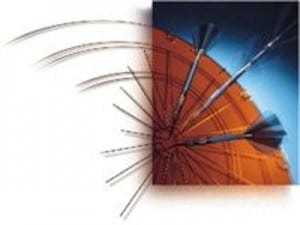
——————————
The real future of technology is for IT to integrate with business, or in other words, to converge business and technology. The idea of aligning with business is too weak to define what IT and SAP must do within the enterprise to generate significant ROI.
Think about it: During the course of an SAP project, the focus is on integrating the enterprise into a single data repository with dependent process chains. Somehow, that same level of integration is not required of the business and IT after you go live.
Product Convergence Lessons for Next Generation SAP Organizations
What do I mean by convergence? The idea is that you enable of business with technology so that the two cannot be distinguished from each other. As a result, the lines between business and IT departments must be deliberately blurred.
Although the following examples are about product convergence, they are great illustrations for how business and IT should integrate, or converge, their functions.
- ARPAnet, which was created by the U.S. Defense Department’s Advanced Project’s group, eventually became the Internet. This was originally an advanced data and communications fabric that could withstand a nuclear war and route both data and communications if whole areas of the network were unavailable. That back-end technology was later combined with early graphical software to create the public Internet.
- Email was a convergence of network technology with hardware, communication protocols, and software applications. That convergence has extended to the Internet for various forms of webmail.
- The advent of the personal computer and its increasing power made the way for decentralized processing in the form of client-server based applications. Central business functions and tools could run on a server, and each user’s experience and application needs could be tailored at their individual workstations.
- ERP applications satisfied the need for a centralized source of data, combining databases, network technology, and software user interfaces. Cloud-based applications or Software as a Service (SaaS) were an extension of that convergence to include remote hardware sourcing and access through the Internet.
- Social media was the next extension of collaborative technologies. Social media employed the Internet’s ability to connect people with software applications, allowing people to communicate in new ways. LinkedIn, Twitter, Facebook, and others are moving forward by connecting people to share more information in real time.
Look at most of Apple’s products. For many years, the Mac PCs and laptops only had marginal market share. While it is increasing, their other products produced explosive market penetration. What was the difference? The products that succeeded converged the customer experience with the things people use (see Business Strategy and IT Strategy to Reproduce Apple Innovation).
What is Really Different About Apple Anyway?
Since Apple is so successful today, we will look at their example. The iPhone, iPad, iPod, all have one thing in common: they took the idea of usability around the convergence of several technology streams to the next level. Apple leveraged technology, communication, and entertainment to create something more than just a Graphical User Interface (or GUI); they created something useful for entertainment.
Apple didn’t really invent anything new. Apple found that place of convergence with quality technology products and user experience.
Apple didn’t invent the cell phone, portable music (remember Sony’s Walkman?), or Internet data delivery (for example, music streaming software). What Apple did was converge these technologies with a great front-end and delivery system. Or as Steve Jobs said, they “put a Mac in a cell phone.”
Apple also went one step further– they sought to own the entire content delivery infrastructure and hardware architecture for their devices. For the iPod, they made a music delivery system (iTunes); for the iPhone and iPad, they extended iTunes to add an Application store, etc.
Business and IT Convergence Can Transform Your Company
If we take this product concept one step further and apply it to IT and Business, you can also bring about “convergence” in the IT-enabled enterprise.
Business-technology convergence and business-technology management are terms that spring from a simple idea: Technology is a means for achieving business objectives; therefore, managing business and technology together provides significantly better results than managing them in separate silos. By converging business and technology management, enterprises can nimbly respond to changing marketplace dynamics, technology evolutions and competitive pressures—capabilities that are especially important during an economic downturn. [FN1]
[C]onverged enterprises know when to change the rules to maintain a strategic advantage over their competitors—and to sense and respond to changes in the marketplace.
I am a strong advocate for the convergence of roles between business and IT. After all, how will the IT organization know and understand the business rules without participating directly in business?
The best convergence candidates are likely your power users or super users who participated in your SAP project. They come from the business and also have exposure to the system and the challenges around IT. The IT specialists should also work in the business areas to become super analysts. They need to know and understand how business actually gets done, so they can figure out the best way to apply technology for business objectives to be addressed.
Completing the SAP Convergence
On top of the business users being integrated into IT and IT integrated into the business, the steering committee must not be disbanded. I cannot stress this need strongly enough. That group of senior-level business individuals is key to a successful and ongoing transformation of the business. They are one of the critical ingredients for convergence to occur.
If you continue to develop your key business users and maintain your steering committee, you have a power organization structure in place to build on convergence of business technology. For more information on the importance of continuing involvement by the steering committee long after the SAP project has gone live, see my previous post on Using Your SAP Steering Committee for Business Transformation .
========================
[FN1] http://www.baselinemag.com/c/a/Business-Intelligence/The-Value-of-Convergence-236013/





